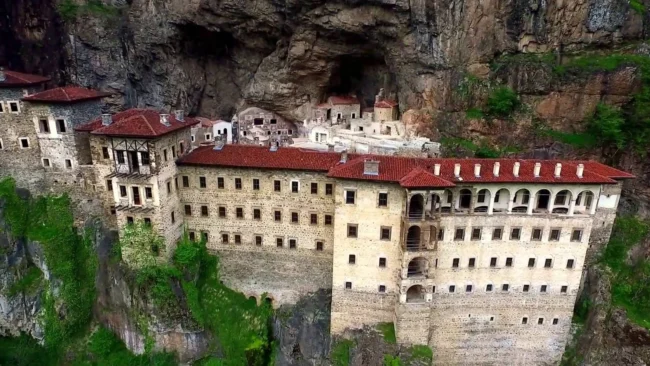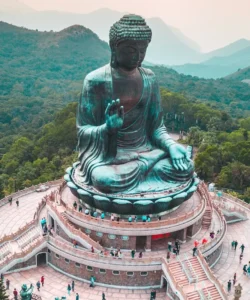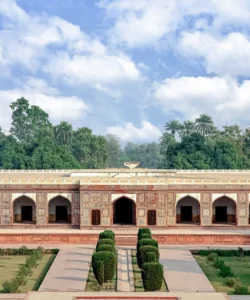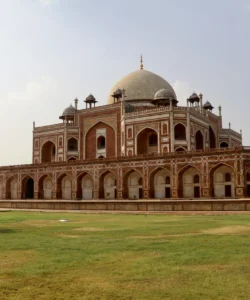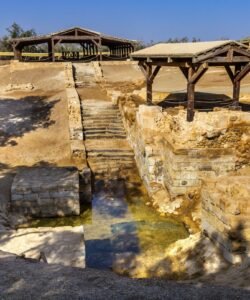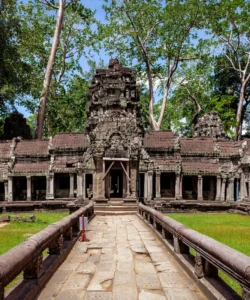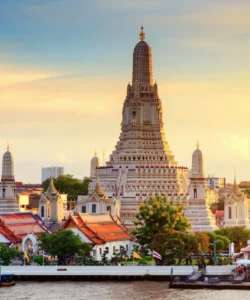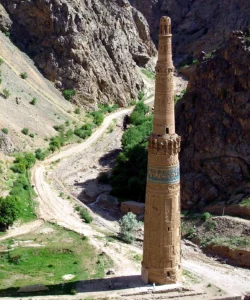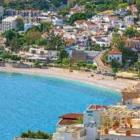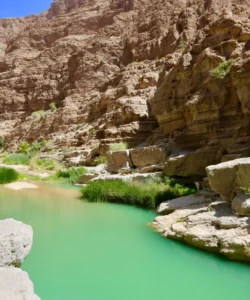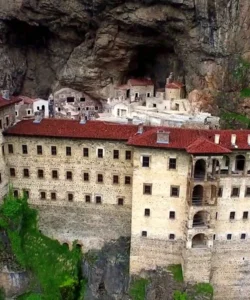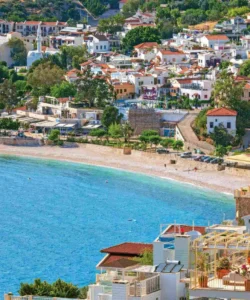Sumela Monastery (Turkish: Sümela Manastırı) is a breathtaking Greek Orthodox monastery nestled in the Pontic Mountains, within the Maçka district of Trabzon Province, Turkey. Dating back to the 4th century CE, this ancient monastic complex is famously built directly into the face of a sheer cliff, creating an awe-inspiring sight that blends harmoniously with its natural surroundings. It holds significant historical, cultural, and religious importance, particularly for Greek Orthodox worshippers.
Listen to an introduction about Sumela Monastery
Name and Address
- Name: Sumela Monastery (also known as the Monastery of the Virgin Mary or Panagia Soumela)
- Address: Altındere Valley National Park, Maçka district, Trabzon Province, Turkey. It is approximately 46 km (26 miles) south of Trabzon city.
How to Get There
Visiting Sumela Monastery involves reaching Trabzon and then traveling to the Altındere Valley National Park.
- By Air: The closest airport is Trabzon Airport (TZX), with domestic flights from major Turkish cities.
- By Road: From Trabzon, you can hire a car, take a taxi, or join an organized tour to Altındere Valley National Park. The drive takes about 40-55 minutes.
- On-Site: Vehicles can reach a parking lot at an altitude of 950 meters (3,117 ft). From there, visitors typically take a shuttle bus further up the mountain, followed by a hike of approximately 1 km (0.7 miles) up a steep, winding path through the forest to reach the monastery’s entrance, which is situated at 1,200 meters (3,937 ft) above sea level. Comfortable shoes are essential for the uphill walk. An entrance fee is required.
Landscape and Architecture
Sumela Monastery is a remarkable example of human ingenuity and devotion, with its structures seemingly carved out of the mountain itself. Its architecture is a testament to centuries of continuous construction, adaptation, and artistic embellishment.
- Cliffside Location: The most striking feature is its dramatic perch on the face of a sheer cliff, approximately 300 meters (984 ft) above the valley floor. This strategic and visually stunning location provided natural defense and a sense of spiritual isolation.
- Monastic Complex: The monastery is a sprawling complex built around a central Rock Church (cave church), which is its oldest and most sacred part. Over centuries, various sections were added, including:
- Monks’ Cells: Numerous cell-like rooms for monks and guests, often multi-storied and built directly into or onto the rock surface.
- Chapels: Several smaller chapels adorned with frescoes.
- Kitchens, Library, and Guest Rooms: Functional areas necessary for monastic life and accommodating pilgrims.
- Aqueduct: The ruins of a large aqueduct, once supplying water to the monastery, can be seen along the cliffside. Some arches have been restored.
- Frescoes and Wall Paintings: The interior and exterior walls of the Rock Church and other chapels are extensively covered with vibrant frescoes and wall paintings. These artworks, dating from various periods (primarily 18th and 19th centuries, with traces of older Byzantine work), depict biblical scenes, saints, and episodes from the lives of Jesus Christ and the Virgin Mary. They showcase a blend of Byzantine, post-Byzantine, and local Anatolian artistic styles.
- Integration with Nature: The construction utilizes the natural stone resources of the region, such as travertine and limestone, seamlessly blending the man-made structures with the natural rock face.
What Makes It Famous
- Iconic Cliffside Location: Its incredibly dramatic and unique setting, seemingly suspended from the cliff, makes it one of the most visually stunning and famous monasteries in the world.
- Ancient Origins and Continuous History: Founded in the 4th century CE, Sumela has a long and rich history, serving as a prominent monastic center for over 1,600 years, even under Ottoman rule, which granted it special privileges.
- Religious Significance: Dedicated to the Virgin Mary, it became a major pilgrimage site for Greek Orthodox Christians, particularly due to a legendary icon of the Theotokos (Virgin Mary) believed to have been painted by St. Luke the Evangelist.
- Cultural Heritage: It stands as a significant symbol of Pontic Greek heritage and a testament to the enduring spiritual and artistic traditions of the region.
- Architectural Ingenuity: The sheer engineering feat of building such an extensive complex into a steep cliff face is a marvel of ancient and medieval architecture.
- UNESCO World Heritage Tentative List: It is currently on the UNESCO World Heritage Tentative List, recognizing its outstanding universal value.
Differences from Some Other Wonders
- Monastery vs. Secular/Pagan Sites: Unlike many ancient wonders which are grand cities, tombs, or temples dedicated to pagan deities (e.g., Ephesus, Mausoleum at Halicarnassus, Temple of Artemis), Sumela is a Christian monastic complex, focused on spiritual life and pilgrimage.
- Organic, Cliff-Integrated Architecture: While other sites might be built on a mountain (like Mount Nemrut), Sumela is literally built into and hangs from a cliff face, making its integration with the natural landscape exceptionally intimate and dramatic. The organic, additive growth of the monastery over centuries, adapting to the rock, is distinct from the planned, freestanding monumental structures of other wonders.
- Function as a Living Religious Site (Historically): Unlike purely archaeological ruins, Sumela was a continuously active religious center for most of its history, with monks living and worshipping there, adding a layer of living tradition to its historical significance.
- Remote and Secluded Setting: Its remote location in a densely forested valley, accessible by a challenging climb, distinguishes it from more urban or easily accessible ancient sites.
Sumela Monastery Photos:
